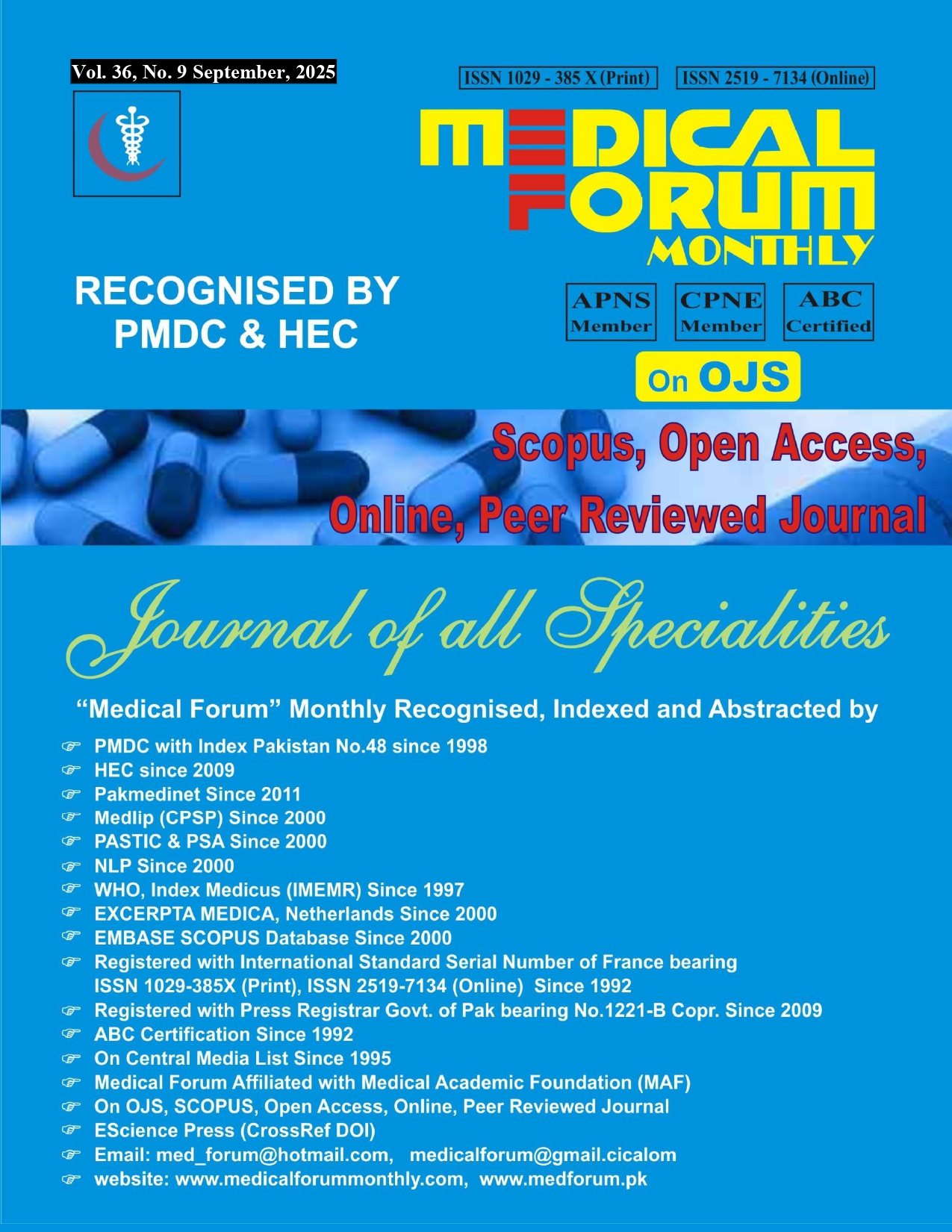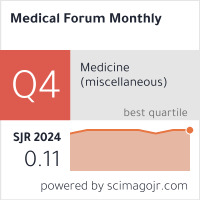Effectiveness of Early Versus Delayed Surgical Intervention in Bile Duct Injury Post Cholecystectomy
DOI:
https://doi.org/10.60110/medforum.360901Keywords:
Bile duct injury, cholecystectomy, hepaticojejunostomy, early repair, delayed repair, surgical outcomesAbstract
Objective: To compare the clinical outcomes of early versus delayed surgical repair in patients with post- cholecystectomy bile duct injury (BDI).
Study Design: Prospective observational study
Place and Duration of Study: This study was conducted at the General Surgery Department of Hayatabad Medical Complex, Peshawar from June 2023 to December 2024.
Methods: A total of 45 patients with BDI were divided into an early intervention group (n=22; definitive repair within 6 weeks) and a delayed intervention group (n=23; repair after ≥6 weeks following conservative management). Patients diagnosed with BDI were included in the study. All patients were managed with Roux-en-Y hepaticojejunostomy performed by hepatobiliary surgeons. We evaluated intraoperative parameters, postoperative complications, hospital stay, and long-term outcomes. Statistical analysis was performed using SPSS version 25, with p<0.05 considered significant.
Results: The results show mean age is 47.3 ± 12.1 years, with a male-to female ratio of 1:1.5. Most BDIs occur after laparoscopic cholecystectomy were included in study. The early intervention group experience significantly higher postoperative complication rates compared to the delayed group (40.9% vs. 17.4%, p=0.03), including bile leaks, surgical site infections, and sepsis. Hospital stay is longer in the early group (12.5 ± 3.8 vs. 9.2 ± 2.6 days, p=0.01). There are no significant differences in operative time, blood loss, intraoperative complications, or long- term outcomes such as anastomotic stricture and recurrent cholangitis. The delay in intervention group has a higher, though not statistically significant, overall success rate (91.3% vs. 81.8%, p=0.43).
Conclusion: Delayed surgical repair of post-cholecystectomy BDIs is associated with fewer postoperative complications and shorter hospital stays without compromising long-term outcomes. These findings support a delayed repair approach after initial resuscitation and inflammation resolution.
































 This work is licensed under a
This work is licensed under a 